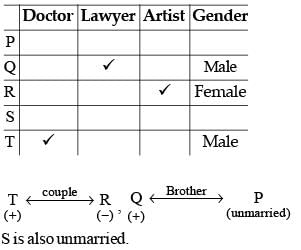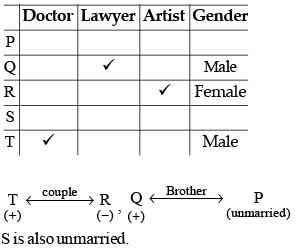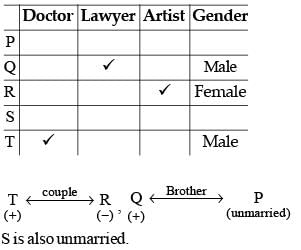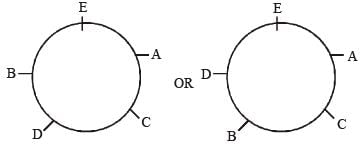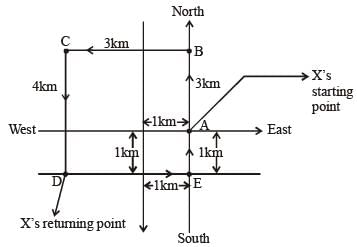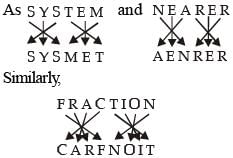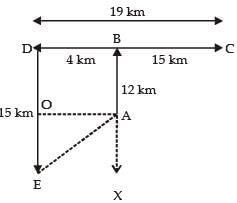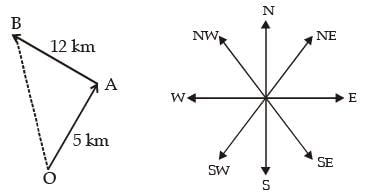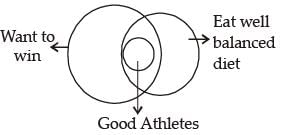Test: Mental Ability, Analytical & Logical Reasoning - 5 (2016-2015) - UPSC MCQ
20 Questions MCQ Test - Test: Mental Ability, Analytical & Logical Reasoning - 5 (2016-2015)
There are five persons in a group — P, Q, R, S and T. The group has one doctor, one lawyer and one artist. P and S are unmarried students. T is a man married to one of the group members. Q is the brother of P and is neither doctor nor artist. R is not doctor.
Who is the lawyer?
[2016]
There are five persons in a group — P, Q, R, S and T. The group has one doctor, one lawyer and one artist. P and S are unmarried students. T is a man married to one of the group members. Q is the brother of P and is neither doctor nor artist. R is not doctor.
Who is the spouse of R?
[2016]
| 1 Crore+ students have signed up on EduRev. Have you? Download the App |
There are five persons in a group — P, Q, R, S and T. The group has one doctor, one lawyer and one artist. P and S are unmarried students. T is a man married to one of the group members. Q is the brother of P and is neither doctor nor artist. R is not doctor.
Who is the artist?
[2016]
There are five persons in a group — P, Q, R, S and T. The group has one doctor, one lawyer and one artist. P and S are unmarried students. T is a man married to one of the group members. Q is the brother of P and is neither doctor nor artist. R is not doctor.
Who is the doctor?
[2016]
There are some nectar-filled flowers on a tree and some bees are hovering on it. If one bee lands on each flower, one bee will be left out. If two bees land on each flower, one flower will be left out. The number of flowers and bees respectively are:
[2016]
There are five hobby clubs in a college —photography, yachting, chess, electronics and gardening. The gardening group meets every second day, the electronics group meets every third day, the chess group meets every fourth day, the yachting group meets every fifth day and the photography group meets every sixth day. How many times do all the five groups meet on the same day within 180 days?
[2016]
Five people A, B, C, D and E are seated about a round table. Every chair is spaced equidistant from adjacent chairs.
(i) C is seated next to A
(ii) A is seated two seats from D
(iii) B is not seated next to A
On the basis of above information, which of the following must be true?
1. D is seated next to B
2. E is seated next to A
3. D and C are separated by two seats
Select the correct answer using the code given below:
[2016]
There were 50 faculty members comprising 30 males and the rest females. No male faculty member knew music, but many of the female faculty members did. The Head of the institution invited six faculty members to a tea party by draw of lots. At the party it was discovered that no member knew music. The conclusion is that:
[2016]
Consider the following statement:
“We shall go either for a picnic or for trekking”.
Which of the following, if true, would falsify this claim?
[2016]
A person X was driving in a place where all roads ran either north-south or east-west, forming a grid. Roads are at a distance of 1 km from each other in a parallel. He started at the intersection of two roads, drove 3 km north, 3 km west and 4 km south. Which further route could bring him back to his starting point, if the same route is not repeated?
[2016]
In a class of 60 students, where the number of girls is twice that of boys, Kamal, a boy, ranked seventeenth from the top. If there are 9 girls ahead of Kamal, the number of boys in rank after him is:
[2016]
A military code writes SYSTEM as SYSMET and NEARER as AENRER. Using the same code, FRACTION can be written as:
[2016]
A cube has all its faces painted with different colours. It is cut into smaller cubes of equal sizes such that the side of the small cube is one-fourth the big cube. The number of small cubes with only one of the sides painted is:
[2016]
A person walks 12 km due north, then 15 km due east, after that 19 km due west and then 15 km due south. How far is he from the starting point?
[2016]
When three friends A, B and C met, it was found that each of them wore an outer garment of a different colour. In random order, the garments are: jacket, sweater and tie; and the colours are: blue, white and black. Their surnames in random order are : Ribeiro, Kumar and Singh.
Further, we know that :
1. neither B nor Ribeiro wore a white sweater
2. C wore a tie
3. Singh’s garment was not white
4. Kumar does not wear a jacket
5. Ribeiro does not like to wear the black colour
6. Each of the friends wore only one outer garment of only one colour
Q. What is C’s surname?
[2016]
When three friends A, B and C met, it was found that each of them wore an outer garment of a different colour. In random order, the garments are: jacket, sweater and tie; and the colours are: blue, white and black. Their surnames in random order are : Ribeiro, Kumar and Singh.
Further, we know that :
1. neither B nor Ribeiro wore a white sweater
2. C wore a tie
3. Singh’s garment was not white
4. Kumar does not wear a jacket
5. Ribeiro does not like to wear the black colour
6. Each of the friends wore only one outer garment of only one colour
Q. What is the colour of the tie?
[2016]
When three friends A, B and C met, it was found that each of them wore an outer garment of a different colour. In random order, the garments are: jacket, sweater and tie; and the colours are: blue, white and black. Their surnames in random order are : Ribeiro, Kumar and Singh.
Further, we know that :
1. neither B nor Ribeiro wore a white sweater
2. C wore a tie
3. Singh’s garment was not white
4. Kumar does not wear a jacket
5. Ribeiro does not like to wear the black colour
6. Each of the friends wore only one outer garment of only one colour
Q. Who wore the sweater?
[2016]
A person climbs a hill in a straight path from point ‘O’ on the ground in the direction of north-east and reaches a point ‘A’ after travelling a distance of 5 km. Then, from the point ‘A’ he moves to point ‘B’ in the direction of northwest. Let the distance AB be 12 km. Now, how far is the person away from the starting point ‘O’?
[2016]
Between 6 PM and 7 PM the minute hand of a clock will be ahead of the hour hand by 3 minutes at
[2015]
All good athletes want to win and all athletes who want to win eat a well-balanced diet; therefore all athletes who do not eat a well-balanced diet are bad athletes.
The best conclusion from this statement is that
[2015]



